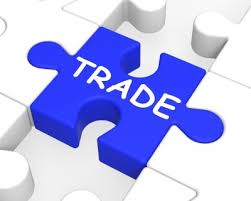There is madness, but perhaps also method, in America’s trade policies

DIVINING meaning in the Trump administration’s trade announcements is a thankless task. No sooner does a policy seem settled than it is thrown up in the air once more. On May 23rd, days before a scheduled meeting with the European Union and Japan on a joint trade strategy and in the middle of talks to revamp the North American Free-Trade Agreement (NAFTA), it began an investigation into whether car imports are a threat to America’s national security. On May 29th, days after tariffs on imports from China were supposedly put on hold, official word came that tariffs on $ 50bn of Chinese imports would be imposed “shortly” after June 15th. Barring a last-minute change of heart—which would not be the first—as The Economist went to press the administration was expected to announce tariffs on steel and aluminium imports from the EU from June 1st. Whether America’s partners in NAFTA, Canada and Mexico, would also be hit was unclear.
The chaos is partly the consequence of President Donald Trump’s mercurial temperament, and the fact that he is served by advisers who disagree with each other. Steven Mnuchin, his treasury secretary, seems more interested than, say, Peter Navarro, his trade adviser, in avoiding a trade conflict with China. It may also be an attempt, in the style of “The Art of the Deal”, to throw negotiating counterparties off-balance and cow them into submission—and perhaps to convince companies abroad that exporting to America is too risky.
But hidden in the muddle there is also a grim logic. Mr Trump, and at least some of his trade advisers, believe that when one unorthodox trade move has knock-on consequences, the solution is not to rethink it, but to follow it with another.
The investigation announced by the Department of Commerce on May 23rd, into whether imports of cars and car parts threaten national security, is illustrative. The suggestion is absurd, and if the conclusion is that they do, it would make a mockery of the global rules-based system of trade. But the administration would be able to apply whatever tariffs it liked to auto imports while staying within the letter, if not the spirit, of American law.
Tariffs of 25% on cars and car parts, as Mr Trump apparently wants, would be disastrous for Canada’s and Mexico’s car industries, though American buyers of cars and parts would suffer too. (Around 56% of the light vehicles sold in America in 2017 were assembled in the country, and 22% in Canada and Mexico together.) On May 24th Justin Trudeau, Canada’s prime minister, wearily told Reuters that the decision to target cars was connected to the NAFTA negotiations. It seems unlikely that the move will do anything to encourage Canadian and Mexican negotiators to settle quickly—the Department of Commerce hearings will take months. But it will increase America’s leverage as it tries to reshape NAFTA’s rules on cars in ways it has already signalled.
The NAFTA talks are stalled over the conditions a car must satisfy in order to qualify for tariff-free trade within the bloc. American negotiators want more demanding national-content requirements, and a rule that at least 30% of a car be made by workers earning above a high wage threshold. But they have woken up to the possibility that carmakers that find the proposed rules too burdensome might simply ignore them and pay the non-NAFTA tariff of 2.5%. That would become far less feasible if the tariff were to rise tenfold, with NAFTA members exempted.
A stiff tariff on auto imports might also seem to fulfil other objectives of American trade hawks. Mr Trump seems convinced that the EU’s 10% tariff on car imports violates the spirit of reciprocity, and that Japan treats American car companies unfairly in other ways, such as subjecting them to onerous inspections (there is no tariff on cars entering Japan). If these other countries are unwilling to lower their trade barriers, then a tariff would at least shut out their exports. If NAFTA producers are excluded from any restrictions, then they could even find themselves with a large tariff preference in the American market, which would help offset any extra burdens imposed by the new deal.
If this is the strategy, then carmakers elsewhere should be worried. Cars are the most traded product in the world by value, according to the MIT Observatory of Economic Complexity. And America is the world’s largest importer. In 2017 cars made up 41% of the value of Japan’s goods exports to America, and 14% of the EU’s.
Some companies, including Ford, GM and Honda, already assemble most of the cars they sell in America within its borders. But other manufacturers seem more exposed to a 25% non-NAFTA tariff, including Mazda, BMW and Daimler, which produce more than 60% of their American sales outside NAFTA, estimates Barclays, a bank. Whether with imports of steel, aluminium and cars, or the bilateral relationship with China, at some point the Trump administration may decide to show the world that it is not bluffing.
This article appeared in the Finance and economics section of the print edition under the headline “Puzzle pieces”

